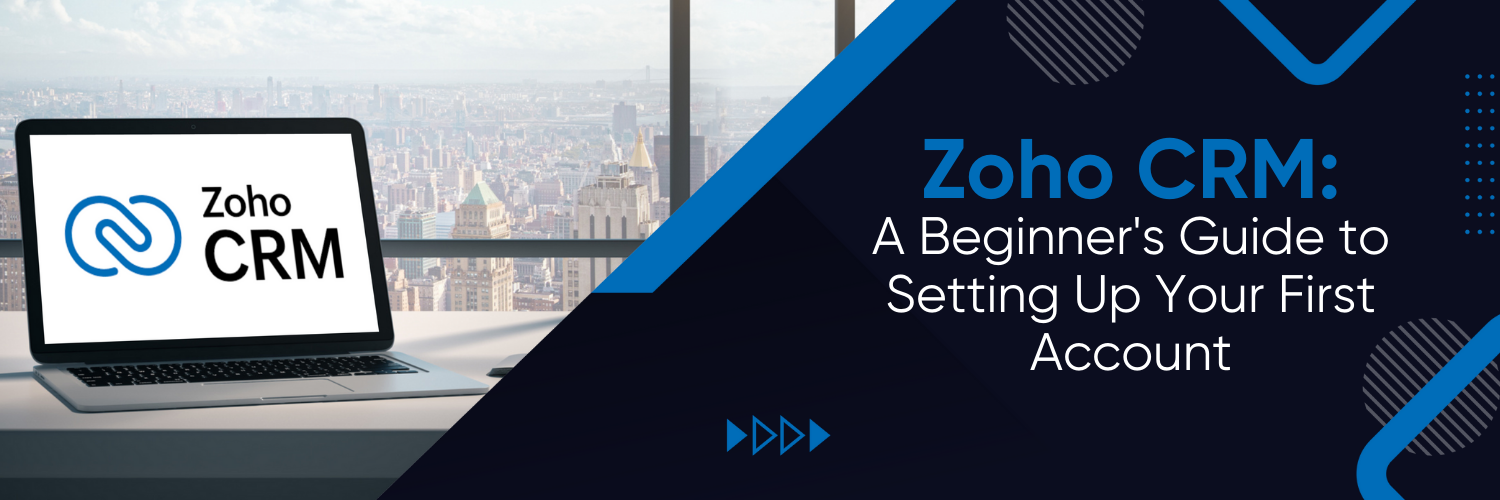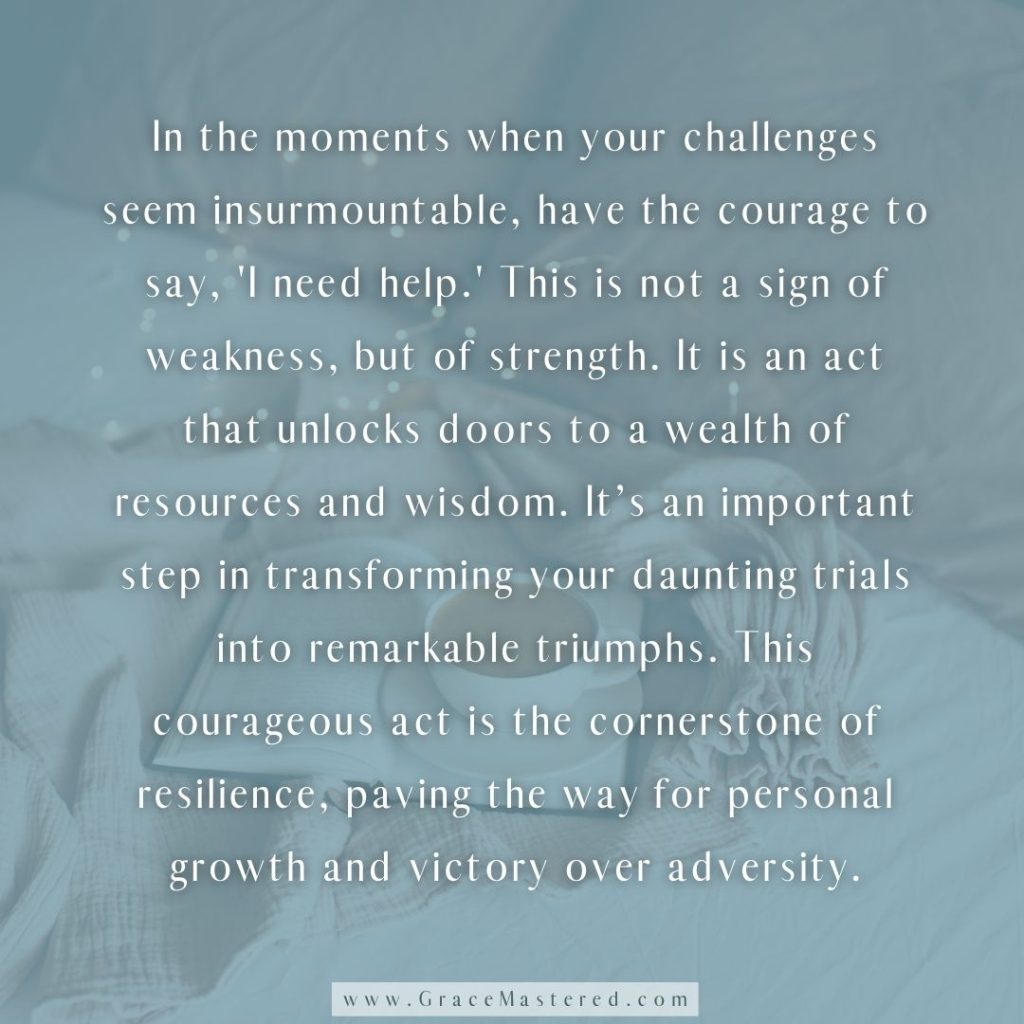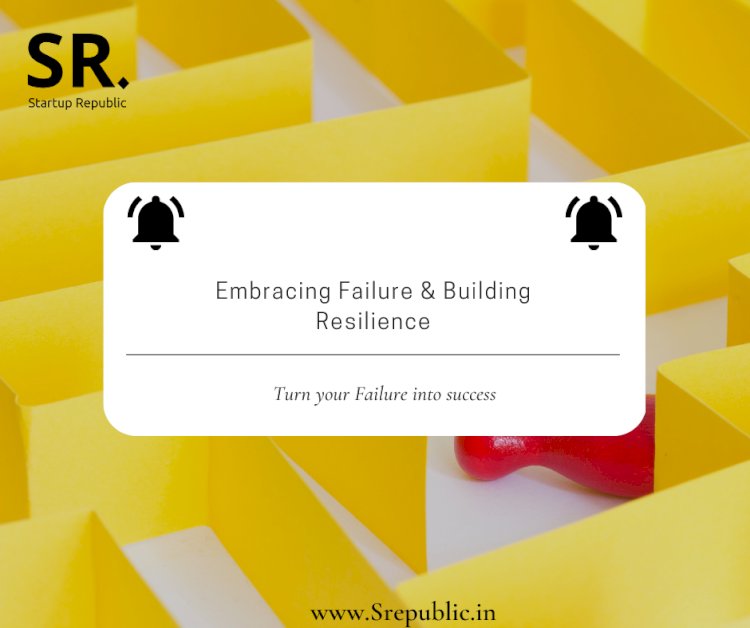
Mastering Your Customer Relationships: A Beginner’s Guide to Setting Up Your CRM System
In today’s fast-paced business world, customer relationships are the bedrock of success. But as your business grows, keeping track of every interaction, every lead, and every customer can feel like herding cats. Emails are scattered, notes are on sticky pads, and important details get lost in the shuffle.
Sound familiar? This is where a CRM system (Customer Relationship Management) comes in. It’s not just fancy software; it’s your business’s central nervous system for all things customer-related. For beginners, the idea of setting up a CRM can seem daunting, but it doesn’t have to be.
This comprehensive guide will walk you through everything you need to know about setting up your CRM system, from understanding what it is to making it an indispensable tool for your business. Let’s dive in!
What Exactly is a CRM System, Anyway?
Think of a CRM system as your ultimate digital rolodex, supercharged personal assistant, and marketing genius, all rolled into one. At its core, a CRM is a technology that helps businesses manage and analyze customer interactions and data throughout the customer lifecycle. The goal is simple: improve business relationships with customers to assist in customer retention and drive sales growth.
In simpler terms, it’s a single, organized place where you store all information about your customers and potential customers. This includes:
- Contact Information: Names, emails, phone numbers, addresses.
- Interaction History: Every phone call, email, meeting, social media mention, and customer service ticket.
- Sales Opportunities: Details about potential deals, their stage in the sales pipeline, and projected value.
- Marketing Activities: Which emails they’ve opened, webinars they’ve attended, or ads they’ve clicked.
- Customer Service Records: Past issues, solutions, and satisfaction levels.
Instead of having bits of customer data scattered across spreadsheets, email inboxes, and individual notebooks, a CRM centralizes it all.
Why Do You Need a CRM? The Undeniable Benefits
You might be thinking, "My current system (or lack thereof) is fine." But consider the transformative benefits a well-implemented CRM can bring, especially for growing businesses:
- Improved Organization and Efficiency:
- All customer data is in one place, accessible to everyone who needs it.
- No more searching through old emails or asking colleagues for information.
- Automate repetitive tasks like sending follow-up emails or scheduling reminders.
- Enhanced Sales Performance:
- Track leads through your sales pipeline, identifying bottlenecks.
- Prioritize promising leads and opportunities.
- Access full customer history to tailor pitches and close deals faster.
- Forecast sales more accurately.
- Better Customer Service:
- Support agents have instant access to customer history, allowing for personalized and efficient support.
- Resolve issues faster and improve customer satisfaction.
- Proactively address potential problems before they escalate.
- Streamlined Marketing Efforts:
- Segment your audience based on their interests, purchase history, or demographics.
- Deliver targeted marketing campaigns that resonate with specific groups.
- Track the effectiveness of your marketing campaigns.
- Valuable Data Insights and Reporting:
- Generate reports on sales performance, customer trends, marketing ROI, and more.
- Identify your most valuable customers and understand their behavior.
- Make data-driven decisions for future strategies.
- Improved Team Collaboration:
- Share customer information seamlessly across sales, marketing, and customer service teams.
- Ensure everyone is on the same page regarding customer interactions and needs.
In essence, a CRM helps you understand your customers better, serve them more effectively, and ultimately, grow your business more efficiently.
Choosing the Right CRM for Your Business (Before You Set Up!)
Before you even think about setting up, you need to select the right CRM platform. This is a crucial step, as switching CRMs later can be a complex process. Here’s what to consider:
-
Define Your Needs and Goals:
- What problems are you trying to solve? (e.g., better lead tracking, improved customer support, automating marketing emails).
- Which departments will use the CRM? (Sales, Marketing, Service, All?).
- What specific features are non-negotiable? (e.g., email integration, mobile app, reporting).
- Tip: Involve key team members in this discussion.
-
Budget:
- CRM pricing varies widely, from free basic versions to enterprise-level solutions costing thousands per month.
- Consider not just the monthly subscription but also potential costs for add-ons, training, and support.
-
Scalability:
- Will the CRM grow with your business? Can it handle more users, more data, and more complex processes as you expand?
-
Ease of Use:
- This is paramount for adoption. If it’s too complicated, your team won’t use it.
- Look for an intuitive interface, clear navigation, and readily available tutorials. Most CRMs offer free trials – take advantage of them!
-
Integrations:
- Does it connect with the other tools you already use? (e.g., email platforms like Gmail/Outlook, accounting software like QuickBooks, marketing automation tools, project management software). Seamless integration saves time and prevents data silos.
-
Customer Support and Resources:
- What kind of support does the vendor offer? (Phone, email, chat, knowledge base).
- Are there online communities, forums, or extensive documentation available?
Popular CRM Options for Beginners:
- HubSpot CRM (Free/Paid Tiers): Excellent for small businesses, very user-friendly, strong marketing and sales features.
- Zoho CRM (Free/Paid Tiers): Affordable, highly customizable, part of a larger suite of business tools.
- Salesforce Essentials (Paid): A more robust option, ideal if you anticipate significant growth, but might be overkill for very small businesses initially.
- Pipedrive (Paid): Focused heavily on sales pipeline management, very visual and intuitive for sales teams.
Once you’ve chosen your CRM, you’re ready for the exciting part: setting it up!
The Step-by-Step Guide to Setting Up Your CRM System
Setting up your CRM doesn’t have to be overwhelming. Break it down into these manageable steps:
Step 1: Define Your Goals and Processes (The Planning Phase)
Before touching any software, grab a pen and paper (or a whiteboard). This is the most critical step often overlooked by beginners.
- Map Your Current Customer Journey: How do leads come in? What’s your sales process from first contact to closed deal? How do you handle customer service issues?
- Identify Key Data Points: What information is absolutely essential for each contact, company, or deal? (e.g., lead source, industry, decision-maker, specific needs).
- Determine Your Sales Pipeline Stages: What are the clear, measurable steps in your sales process? (e.g., New Lead, Qualified, Proposal Sent, Negotiation, Closed Won/Lost).
- Outline Key Automations: What repetitive tasks can the CRM handle? (e.g., sending a welcome email, creating a follow-up task after a call).
- Who Needs Access to What? Define roles and permissions for different team members.
Why this is important: Without a clear plan, your CRM will become a digital junk drawer rather than a powerful tool.
Step 2: Appoint a CRM Administrator (or Team)
Even if you’re a small team, designate one person to be the primary CRM administrator. This person will:
- Oversee the setup process.
- Be the go-to person for questions.
- Manage user access and permissions.
- Ensure data consistency and integrity.
- Lead ongoing training and optimization.
For larger teams, consider a small "CRM Champions" team to help drive adoption and gather feedback.
Step 3: Clean and Import Your Data
This is often the most time-consuming step, but absolutely vital. Garbage in, garbage out!
- Gather All Existing Data: Collect contacts, companies, and deal information from spreadsheets, email clients, old CRMs, business cards, etc.
- Clean Your Data:
- Remove Duplicates: Identify and merge duplicate contacts or companies.
- Standardize Formats: Ensure consistent formatting for phone numbers, addresses, names (e.g., "Street" vs. "St.").
- Update Outdated Information: Remove old contacts, update job titles, mark inactive leads.
- Fill in Gaps: Add missing essential information where possible.
- Prepare for Import: Most CRMs provide templates for importing data (usually CSV files). Map your existing data fields to the CRM’s fields.
- Import Data: Follow your CRM’s specific instructions for importing. Start with a small batch if possible to test the process before importing everything.
Tip: Don’t just dump all your data. Be strategic about what you bring in.
Step 4: Customize Your CRM
Now that your clean data is in, it’s time to tailor the CRM to your specific processes.
- Set Up Custom Fields:
- If your business needs to track information not included in the standard CRM fields (e.g., "Customer Type," "Product Interest," "Referral Source"), create custom fields.
- Example: For a real estate agent, a custom field might be "Property Type Preferred."
- Configure Your Sales Pipeline(s):
- Translate the pipeline stages you defined in Step 1 into your CRM. Most CRMs allow you to drag-and-drop deals through these stages.
- Example: "Lead Inbound," "Discovery Call Scheduled," "Proposal Sent," "Contract Signed."
- Create Automation Rules:
- Set up workflows to automate repetitive tasks.
- Examples:
- When a new lead is added, automatically assign it to a sales rep.
- After a deal moves to "Proposal Sent," automatically schedule a follow-up task for 3 days later.
- Send an automated welcome email to new customers.
- Develop Email Templates and Snippets:
- Create reusable templates for common emails (e.g., initial outreach, meeting confirmations, follow-ups).
- Use snippets for frequently used phrases or paragraphs.
- Set Up Dashboards and Reports:
- Customize your dashboard to show key metrics at a glance (e.g., sales pipeline value, number of new leads, customer satisfaction scores).
- Create reports that give you insights into your performance.
Step 5: Integrate with Other Tools
A CRM becomes truly powerful when it talks to your other essential business tools.
- Email Integration: Connect your CRM to your email client (Gmail, Outlook) so that emails sent to/from contacts are automatically logged in the CRM.
- Calendar Integration: Sync your calendar to easily schedule meetings and appointments with contacts directly from the CRM.
- Marketing Tools: Connect to your email marketing platform (e.g., Mailchimp, Constant Contact) or social media tools.
- Accounting/Invoicing Software: Integrate with tools like QuickBooks or Xero to streamline billing and financial tracking.
- Customer Support Platforms: Link with tools like Zendesk or Freshdesk for seamless support ticket management.
Check your CRM’s integration marketplace or settings for available connections.
Step 6: Train Your Team
The best CRM in the world is useless if your team doesn’t use it correctly, or at all. User adoption is critical!
- Start with Why: Explain the benefits for them (e.g., easier lead tracking, less administrative work, better commission tracking).
- Hands-on Training: Don’t just show slides. Provide interactive sessions where users can log in and perform common tasks.
- Role-Specific Training: Tailor training to different roles (sales reps need to know how to manage deals, marketing needs to know how to segment lists).
- Create a Knowledge Base: Develop simple, internal guides or FAQs for common tasks.
- Ongoing Support: Be available for questions and provide regular refreshers or tips.
- Lead by Example: If managers and leaders actively use the CRM, the rest of the team will follow.
Tip: Consider rolling out the CRM to a small pilot group first to iron out kinks before a full launch.
Step 7: Test and Refine
Your CRM setup isn’t a "set it and forget it" process.
- Test Workflows: Have team members run through common scenarios (e.g., adding a new lead, moving a deal through the pipeline, logging a call).
- Gather Feedback: Actively solicit feedback from users. What’s working? What’s confusing? What features are missing?
- Make Adjustments: Be prepared to tweak custom fields, pipeline stages, automation rules, and dashboards based on real-world usage.
- Monitor Data Quality: Regularly check for duplicates, incomplete records, or inconsistent data.
This iterative process ensures your CRM truly supports your business needs as they evolve.
Maximizing Your CRM: Beyond the Initial Setup
Once your CRM is up and running, the journey doesn’t end. Continuous engagement and optimization will unlock its full potential.
- Regular Data Cleanup: Schedule periodic reviews to merge duplicates, update old information, and ensure data accuracy.
- Consistent Usage is Key: Encourage and enforce daily usage. The more consistently your team logs activities and updates records, the more valuable your CRM becomes.
- Leverage Reporting and Analytics: Don’t just input data; analyze it! Use the CRM’s reporting features to identify trends, measure performance, and make informed decisions.
- Seek User Feedback Continuously: Your team is on the front lines. They will have valuable insights into how the CRM can be improved to better serve their daily tasks.
- Stay Updated with New Features: CRM vendors regularly release updates and new features. Explore these to see how they can further enhance your processes.
- Automate More Processes: As you get comfortable, look for more opportunities to automate routine tasks, freeing up your team for higher-value activities.
Common Pitfalls to Avoid When Setting Up Your CRM
Even with the best intentions, some common mistakes can derail your CRM implementation. Be aware of these:
- Poor Planning: Jumping straight into software without defining goals, processes, and data needs. This leads to a messy, ineffective system.
- Data Overload or Underload: Trying to track too much unnecessary information (overload) or not tracking enough critical data (underload). Find the right balance.
- Lack of Training and User Adoption: Implementing a system without proper training and ongoing support means your team won’t use it, rendering your investment useless.
- Over-Customization: Adding too many custom fields or complex workflows from the start can make the system clunky and difficult to use. Start simple and add complexity as needed.
- Treating it as a "Set It and Forget It" Solution: A CRM is a living system that needs ongoing attention, refinement, and data maintenance to remain effective.
- Not Assigning Ownership: Without a dedicated administrator or team, no one takes responsibility for the CRM’s health and evolution.
- Ignoring Data Quality: Importing dirty data or not maintaining data hygiene leads to unreliable reports and frustrated users.
Conclusion: Your CRM Journey Has Just Begun
Setting up your CRM system is a significant step towards building stronger customer relationships and fostering sustainable business growth. While it requires planning, effort, and commitment, the rewards are immense: unparalleled organization, enhanced sales, superior customer service, and invaluable business insights.
Think of your CRM as an investment in your future. By following this beginner’s guide, you’re not just installing software; you’re laying the foundation for a more efficient, profitable, and customer-centric business. Embrace the journey, empower your team, and watch your customer relationships flourish!



Post Comment